-
Car Reviews
- All reviews
- Midsize SUVs
- Small cars
- Utes
- Small SUVs
- Large SUVs
- Large cars
- Sports SUVs
- Sports cars
- Vans
Latest reviews
- Car News
-
Car Comparisons
Latest comparisons
- Chasing Deals
Volkswagen’s landmark electric midsize SUV succeeds in blending the familiar with the futuristic with its crucial foray into attainable mainstream EV motoring
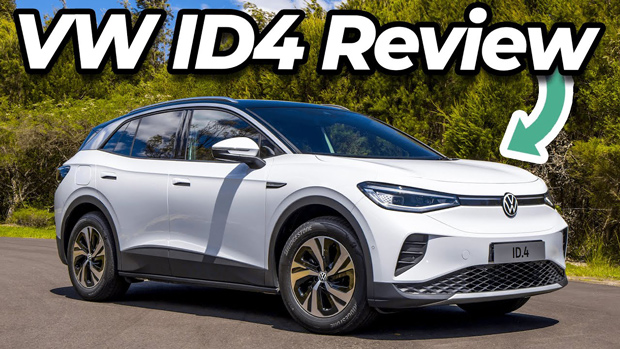
As milestone model launches go for Volkswagen Australia, the ID4 midsize SUV and its coupe-like ID5 twin that spearheads the brand’s fully electric future, is going to be a big one. But this drive of the former model on screen before you is not it.
Despite having been on sale in some global markets for some time now, Aussie ID4s won’t hit local showrooms until late 2023, a full year from now.
But that’s not to stop the local arm from charging up a buzz (sorry) for what’s clearly positioned as a volume-seller of an eventually broad electric ID stable, with a taste test of overseas examples on Australian hot-mix.
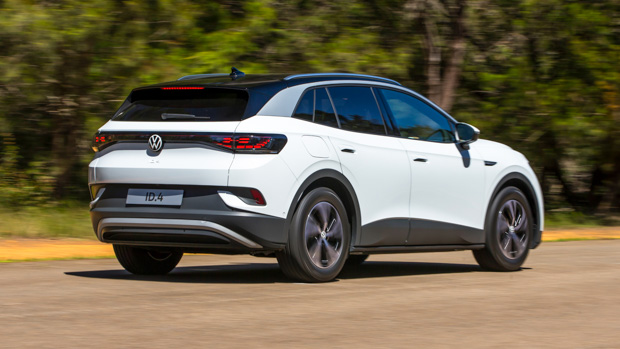
At a private test facility in Sydney, Volkswagen Australia rolled two different right-hook examples of its BEV debut sourced from the UK that “closely resemble Australian specification,” says the horse’s mouth.
These are not prototypes but rather production versions, in two key single-motor rear-driven specs due to debut ID4 locally prior to the release of subsequent variants, including the confirmed-for-Oz dual-motor GTX variants.
The two examples we got to drive include the high-spec Pro Performance – the blur car – that’s the full bell-and-whistle rear-driven package bringing a 150kW/310Nm motor, Volkswagen’s ‘big’ 82kWh (77kWh usable) battery and a promise of up to 522 kilometres of range.
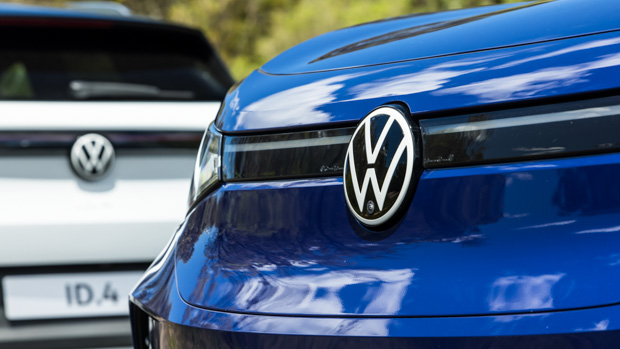
As reported prior, it’ll be priced around the $60k mark, or similarly to that of its logical ICE alternative, the Tiguan 162TSI.
Also on hand to sample is the UK-spec of the lower-grade Pure Performance trim – the white car – with a slightly more modest feature and specification set, a lower-power 125kW and 310Nm motor, a 55kWh (52kWh usable) battery more modest 345-kilometre claimed range.
It brings the lure of lower forecast entry pricing, around the low- to mid-$50k mark, and swifter recharge times. It doesn’t take a stretch to foresee that it targets fleet sales.
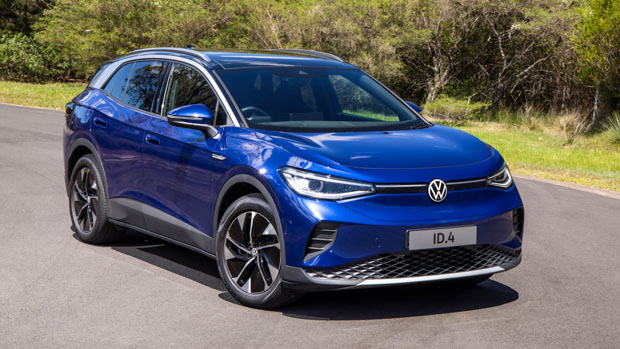
Each is similarly (Tiguan) sized at just under 4.6 metres in length, with similar cabin dimensions (closer to Touareg) thanks to the nifty packaging advantages afforded by the Volkswagen Group’s dedicated modular battery architecture called MEB.
So while eventual, more performance-oriented versions such as the 220kW/460Nm GTX will materise, it’s the Pro and Pure that conspicuously target mainstream buyers in a mainstream pricing band where EV offerings are currently thin on the ground – in a fully electric landscape that’s somewhat top heavy with six-figure, high-performance, luxury-laden offerings.
So are the signs positive for Volkwagen’s new BEV foray? And which of the pair we sampled looks the more desirable and enticing proposition for accessible electric motoring for Oz?
First up, the blue-tinged Pro Performance version.
The high-spec Pro boasts more power, but by nature of its larger 82kWh battery it’s also the heavier of the two ID4s, its circa 2.2 tonnes kerb (2124kg tare) weighing 158kg more than the Pure (1966kg tare).
And while it’s the quicker of the two at a fairly leisurely 8.5 second 0-100km/h, it only nets a half-second advantage over the Pure (9.0sec).
Firecrackers they are not. And from the first trounce of the right foot off the mark, the clear absence is the humongous head-snapping shove that has fast become a bit of a hallmark of high-torque, big-dollar EV motoring. And know what? That makes for no downgrade of the ID4 driving experience whatsoever.
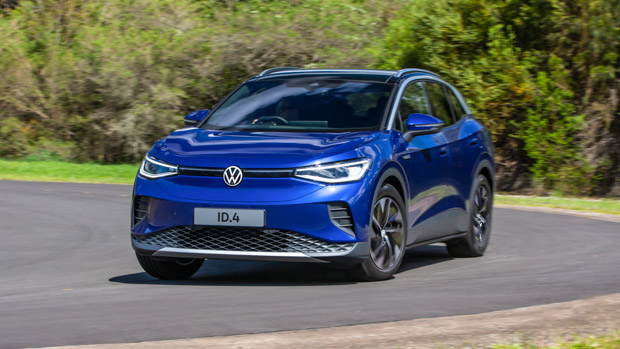
Off the mark, the 150kW ID4 is alert, assertive and as swift as the lion’s share of midsize SUV owners will want it to be. Torque is fulsome and amply, paired with nature that is typical for the well-sorted EV breed: smooth, quiet and satisfyingly progressive.
A twist of the drive selector, quite novelly located to right of the floating digital driver’s screen, toggles between D (for drive) and B (for brake), the former bringing leisurely almost internal combustion style motor braking, the latter more aggressive deceleration in tandem with strong energy-recuperating regeneration.
Either mode is fine. The D mode is the most pleasant all-rounder, as there’s no woodenness or overly bitey nature to the conventional braking feel, though how such light regen affects outright range remains questionable. Interestingly, the ID4 fits rear drum brakes, though this thoroughly old-school tech doesn’t seem to degenerate the feel of the left pedal.
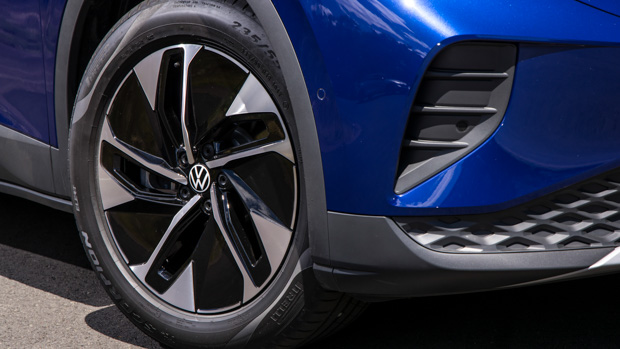
The stronger deceleration of B fit around town driving better, though ID4 does roll on and this mode doesn’t really yield true one-pedal response. What’s lacking is Hyundai Ioniq 5– or Kia EV6-like multimode flexibility.
With ID4, like most EVs, the plump electric torque masks much sense of hefty kerb weight and inertia. In fact, the ID4 feels downright light on its chubby 19-inch rubber feet.
The MEB platform locates the huge battery beneath the floor and between the axle lines, and the low centre of gravity does wonders for the dynamic responses of an SUV clearly not sporting in intent but downright lithe and almost playful in its nature.
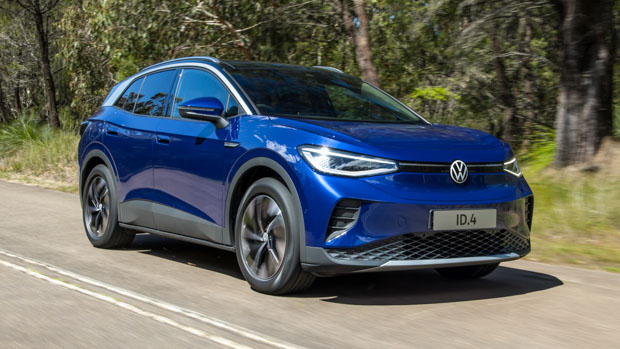
Much of the pleasant on road manner is in its steering, the Pro bringing a variable ratio (aka Progressive) system that feels connected, fluid and direct.
Flowing between the curves, the ID4 is quite taut and cooperative in its responses yet there’s nothing edgy about its nature, the nicely judged Pro-spec adaptive damping doing a fine job of road bumps and bringing a cosseting and comfy vibe on the move.
However, the jury is out as to how the local ID4 will fare in a public forum, away from the smooth curation of our designated off-street test track that doesn’t offer much surface acne.
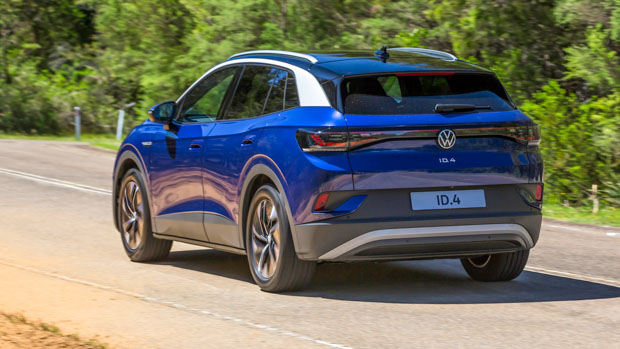
This Pro’s 55-series 19s are likely to be swapped for lower profile 20s, albeit with a similar staggered tyre width of 235mm fronts and 255mm rears as sampled here.
That said, our cursory experience suggests that the ride and handling balance seems well polished.
It’s early days for this MEB platform, one not nearly as evolved as the MQB of some of Volkswagen’s internal combustion models, but these good impressions bode well for the battery architecture’s evolution moving forward.
Next up, the lower-powered, white-coloured 125kW Pure. And frankly, given a cursory off-the-mark acceleration test or three, it’s barely less potent getting up speed. It also maintains all of the nice, quiet and progressive powertrain traits of the Pro as it piles on the acceleration and scrubs pace off in deceleration.
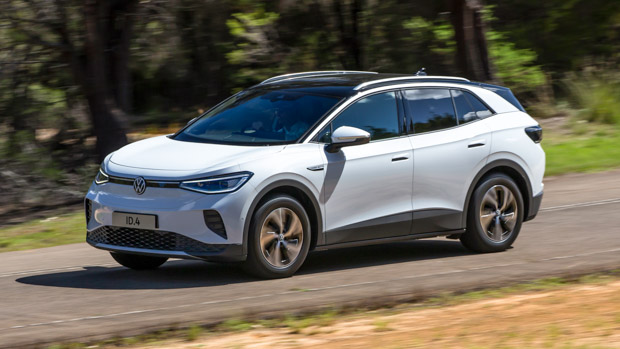
The Pure doesn’t fit the tricky Progressive steering of the Pro or the high-spec version’s Adaptive chassis control suspension. And it doesn’t suffer much at all for lacking them.
Its 18-inch wheels bring even chubbier 60-series tyres and it does seem that their nature adds a touch of extra compliance, while some of the weight saving from the lighter battery brings a hint of extra keenness in the chassis.
In short, by the seat of the pants, there seems like very little downgrade in all in opting for the low-grade Pure on road. Bar, perhaps, a sort of hard threshold in acceleration that might limit its enthusiasm for overtaking on the open road. That said, like the Pure, it’s about as swift as most owners will need pretty much most of the time on road.
Assistance wise, the Pro brings niceties such as a rather excellent 360-camera system and a head-up display with nifty augmented reality content content and Apple Maps direction projected into the windscreen, though the latter features of this UK-spec vehicle weren’t functional for our AUssie test track assessment.

The higher-grade version also fits Travel Assist, which groups active lane keeping and adaptive cruise together for fuss free highway driving, as well as forward and reverse manoeuvre braking, or low speed AEB to avoid parking collisions. Again, only real-world testing at a later date will indicate their effectiveness and functionality.
To drive, the early signs are that Volkswagen has done a fine job calibrating the driving experience of ID4, whichever rear-driven version you might choose.
Much like its exterior design, the ID4’s interior is a blend of familiarity and futurism that’s generally well struck and conformist rather than overtly bold and challenging. And, again, we kick things off by sampling the high-grade Pro first as a sort of benchmark for Volkswagen’s approach to BEV motoring.
It is, like our recently departed Polestar 2 long-termer, a self-starter and self-stopper, no key barrel or button prodding required. The seat has a pressure sensor and start-up is automatic once you touch the brake pedal. To shut down, you simply climb out.
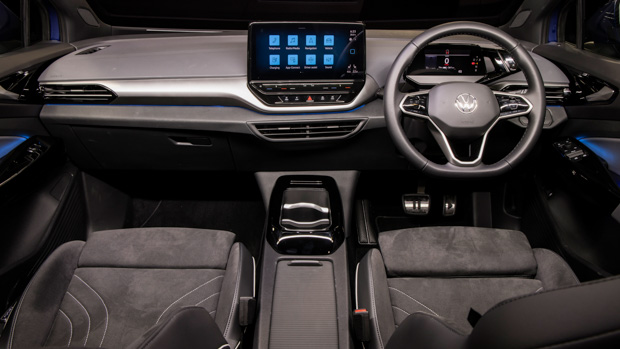
It does look and feel like Volkswagen refreshed and the key point of distinction that the ID4 marks is its dual-floating digital display format.
The Pro fits quite a large 12.5-inch Discover Pro multimedia format – the Pure gets a smaller 10.0-inch unit – though each ID4 grade offers configurable homescreen, gesture control, intuitive voice command and wireless Apple CarPlay and Android Auto.
But what sets ID4 apart from the EV pack is the oh-so-neat 5.3-inch digital driver’s display viewed almost wholly through the centre of a conspicuous familiar Volkswagen wheel, the display frame’s right-most strip doubling as the transmission drive selector. It’s very novel and very cool.
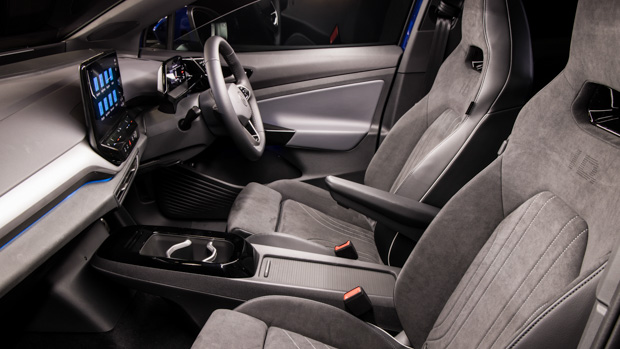
Volkswagen has ‘done a Tesla’ by bundling much of the vehicle control into the multimedia screen, including some of the HVAC control, which makes for a clean presentation if slightly clumsy and distracting setting adjustment. But the net effect is that the general cabin vibe is one of quite pleasing minimalism.
There’s a lot of convention in the style – its look, its colour theme, the material use – and in many ways it doesn’t depart hugely from current internal combustion Volkswagen form. However, its surfaces and lines are more angular and a little more elaborate than what you’ll find in today’s Tiguan or Golf.
The seats are really nice: deeply sculpted sport bucket seats with a neat suedecloth-type trim that wouldn’t go astray in a GTI– or R-branded hot hatch.
They’re 12-way electric with ErgoActive massage functionality and it remains to be seen as to whether they’re standard or optional in eventual Aussie Pro Performance specification.
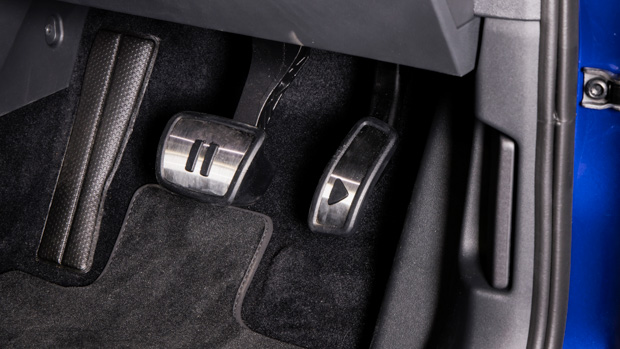
The front seats do have fold-down captain chair armrests that do look somewhat out of place but are essential given how low the centre console is set. The console itself is quite neat, free of vehicle controls and buttons, with a handy slanted phone slot and modularity in that the cupholders and oddment cubbies are interchangeable with one another.
One cute little signature are the pedals: the accelerator boasts a ‘play’ symbol while the brake features a ‘pause’ motif. Clever stuff.
But it’s not until you climb into the second row that you notice the cleverest facet of the ID4 cabin space: space itself. The midsize SUV is, for its 4.6-metre Tiguan-like size, enormous.
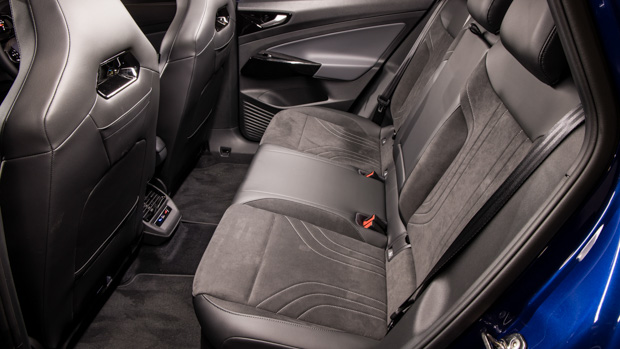
Thanks to the packaging flexibility afforded by its battery-based platform, the ID4’s effective firewall is set very far forward, offering a tremendous cabin length that translates to rear legroom akin to a large-segment Touareg or (stretched) Tiguan Allspace Adventure five-seater.
It feels airy, too, thanks to the Pro’s standard fit panoramic glass roof with an electrically operated blind, while rear passengers are treated to dedicated third-zone climate control adjustment and USB-C device power.
On theme, the midsize ID4 really makes for a compelling choice for those after large-size spaciousness, as the boot is a whopping 543-litres, which converts to 1575-litres with the rear 60:40 split-fold seat backs stowed.
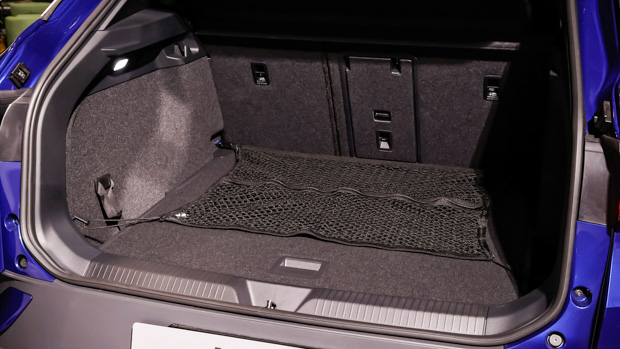
Does the lower-grade Pure feel as much by comparison? Not by much.
Its more regular-fit front seats aren’t any less comfy and its 10-inch infotainment pretty much mirrors the features set of the pricer Pro bar the lack of a 360-degree camera (it’s reverse only). It gets the same three-zone climate, but no fancy head-up trickery.
The audio hardware lacks the 450-watt wallop of the Pro system, there’s no glass roof and the Pure doesn’t fit the powered tailgate offered upstream. Otherwise, they’re much of a muchness…
Unsurprisingly, with its launch a year out, warranty and servicing details are yet to be locked in. Still, there are some key details that shine a light on what to expect from ID4 ownership.
Consumption claims are 16.7kWh/100km for the 125kW Pure and 17.2kWh/100km for the 150kW Pro. Both are competitive on paper if untested in the real-world in Aussie spec.
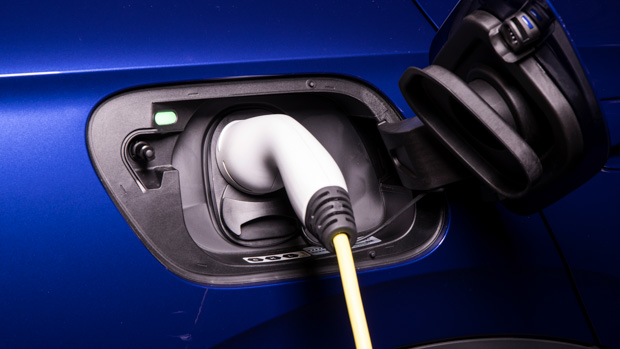
Like range, charging is different between the two variants.
The Pro’s range claim is 522 kilometres from its 82kWh (77kWh usable) battery and it brings a 11kW AC or 125kW DC maximum charging capacity. On the latter, its zero to 80 percent recharge time is 33 minutes. Using a slow-poke 2.4kW AC domestic socket you’re talking 28.5 hours to 80 percent…
Meanwhile, the Pure offers a lower 345km of range from its 55kWh (52kWh usable) battery, though its maximum charging capacity is 7.2kW AC or 110kW DC. Using the latter, the low-spec ID4 takes a shorter 26 minutes for a zero to 80 percent charge…but the caveat is that, of course, outright range in kilometres you yield is measurably shorter.
A household 2.4kW AC takes 19.5 hours, significantly swifter than the Pro if, again, without the Pro’s superior range dividend.
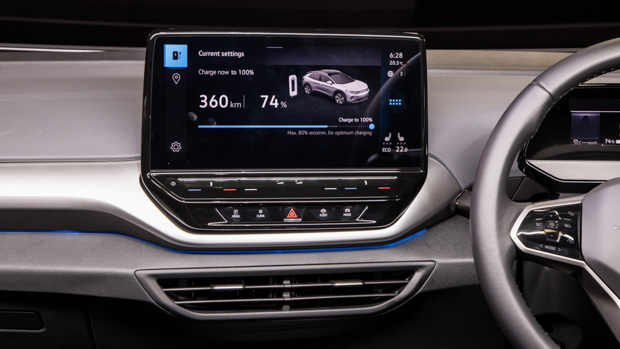
Still with us? Using AC charging station infrastructure, both quote a zero-to-80-percent charge time of 6.5 hours using their maximum charge capacities of 7.2kW for the Pure and 11kW for the Pro.
Both use type 2 sockets.
Disclosure: your author sampled Volkswagen’s ID4 off the back of having driven half a dozen different high-performing, super-luxurious, six-figure EV and a growing disillusionment that today’s pure electric motoring is skewed too high for reasonable accessibility for so many interested buyers on realistic budgets.
With that is a growing sense that so many EV aspirants who aren’t go-fast motoring enthusiasts might happily trade head-snapping acceleration party tricks for long range in an electric vehicle more tailored to more modest driving styles and preferences.
The ID4, and hopefully a growing number of EVs with similar positioning on the motoring landscape, are most welcome right now. They tap mainstream appeal for mainstream tastes and needs and what’s largely a mainstream – albeit semi-premium – price band.

On singular merit, the ID4 offers a polished and comfy drive, ample performance and compelling (theoretical) range in its higher-spec variant. It brings freshness and a veneer of techy flash without ostentacion and is very approachable for EV newcomers.
Better yet, it’s a convincing fully electric alternative to the stalwart ICE-powered Tiguan, complete with the tangible benefits of larger accommodation and whisper-quiet running new EV adopters hope to experience. And without, in forecast, a significant fiscal premium to make the step into electric motoring.
It’s clear that the ID4 isn’t out to set EV benchmarks in performance, range or recharging swiftness. But that’s not the point. It’s out to normalise the electric vehicle to those who consider the format as too exceptional.
And if our first taste is anything to go by, it certainly has the goods to lure many more Aussie bums into electrified seats when it eventually lobs in late 2023.
About Chasing cars
Chasing Cars reviews are 100% independent.
Because we are powered by Budget Direct Insurance, we don’t receive advertising or sales revenue from car manufacturers.
We’re truly independent – giving you Australia’s best car reviews.
The estimate provided does not take into account your personal circumstances but is intended to give a general indication of the cost of insurance, in order to obtain a complete quote, please visit www.budgetdirect.com.au. Estimate includes 15%^ online discount.
^Conditions Apply
Budget Direct Insurance arranged by Auto & General Services Pty Ltd ACN 003 617 909(AGS) AFSL 241 411, for and on behalf of the insurer, Auto & General Insurance Company Limited(ABN 42 111 586 353, AFSL 285 571).Because we don’t know your financial needs, we can’t advise you if this insurance will suit you. You should consider your needs and the Product Disclosure Statement before making a decision to buy insurance. Terms and conditions apply.
Indicative quote based on assumptions including postcode , 40 year old male with no offences, licence suspensions or claims in the last 5 years, a NCD Rating 1 and no younger drivers listed. White car, driven up to 10,000kms a year, unfinanced, with no modifications, factory options and/or non-standard accessories, private use only and garaged at night.
^Online Discounts Terms & Conditions
1. Discounts apply to the premium paid for a new Budget Direct Gold Comprehensive Car Insurance, Third Party Property Only or Third Party Property, Fire & Theft Insurance policy initiated online on or after 29 March 2017. Discounts do not apply to optional Roadside Assistance.
2. Discounts do not apply to any renewal offer of insurance.
3. Discounts only apply to the insurance portion of the premium. Discounts are applied before government charges, taxes, levies and fees, including instalment processing fees (as applicable). The full extent of discounts may therefore be impacted.
4. We reserve the right to change the offer without notice.